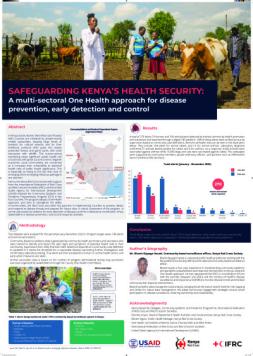In Kenya, Narok, Bomet, West Pokot and Tharaka Nithi Counties are inhabited by predominantly mobile pastoralists, keeping large herds of livestock for cultural reasons and for their livelihood. Livestock often graze into nearby protected forests and game parks, with close interaction with wildlife. This human-animal interfacing raises significant public health risk of zoonosis with great socio-economic negative outcomes. Local communities are concerned as it increases their vulnerability to potential health risks of public health significance. This is especially so owing to the fact that most of emerging and re-emerging infectious pathogens are zoonotic.
Hence, the Kenya Red Cross Society with support from the International Federation of Red Cross and Red Crescent Societies (IFRC) and the United States Agency for International Development (USAID) initiated the Community Epidemic and Pandemic Preparedness Program (CP3) in the four Counties. The program adopts a One Health approach, and aims to strengthen the ability of communities, the Red Cross and other key partners in implementing Counties to prevent, detect and respond to disease threats and prepare for future risks. A critical component of the program is community-based surveillance for early detection of diseases and the multisectoral coordination of key stakeholders in disease prevention, control and response activities.




